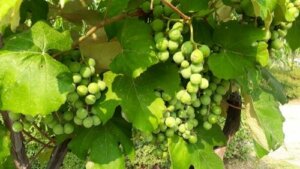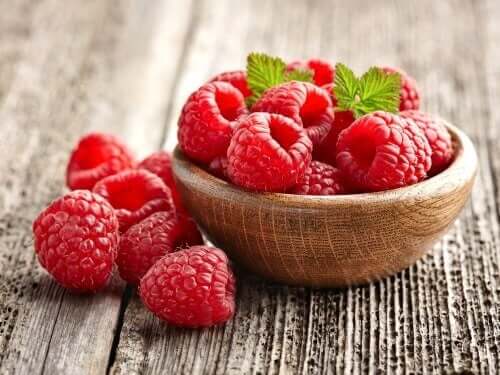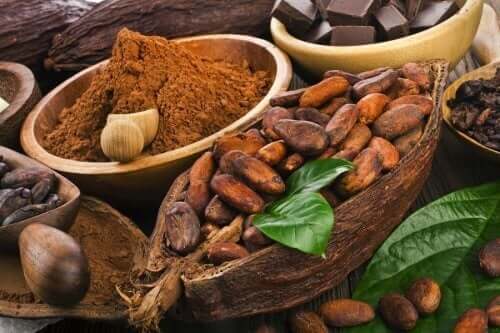Phytochemicals in Food: What Are They?

Phytochemicals in food is actually much more common than you might think. They are substances that are naturally present in foods of plant origin. Currently, many researchers are looking into them because of the health benefits they provide, mainly their antioxidant power and their possible role in cancer prevention.
Phytochemicals are not nutrients themselves, and, therefore, they have no energetic or nutritional function. That’s why we call foods containing phytochemicals functional foods, as they provide health benefits.
In a varied and healthy diet, we can find a sufficient amount of phytochemicals that benefit our health. Likewise, the combination of different phytochemicals in the same food enhances and improves their effects.
Functions of phytochemicals in food and their benefits

The functions attributed to phytochemicals include helping to maintain good vision, as well as the integrity of the bone and epithelial system. In addition, during breastfeeding they stimulate milk production.
Several phytochemicals have an eminently antioxidant function. For this reason, they contribute to reducing inflammation. In addition, they act as protectors in cardiovascular diseases.
Phytochemicals are also well known for their possible relation with the prevention of certain tumors or cancer development. They carry out this function by converting potentially toxic or harmful substances into non-hazardous ones.
Some compounds also collaborate in maintaining the immune system. Therefore, it goes without saying that there are many beneficial properties attributed to phytochemicals.
Characteristics of phytochemicals in food

Phytochemicals are elements that only exist in the plant kingdom and are found in very small quantities. However, a large number of them haven’t yet been researched.
Keep in mind, phytochemicals are not nutrients; there are no diseases that are caused when there isn’t sufficient intake, but they do enhance the action of other nutrients.
Furthermore, they aren’t essential for our body as proteins, carbohydrates, fats, vitamins or minerals are. Since they’re antioxidants, they exert preventive and curative action on the body.
Types of phytochemicals
The most common classification of phytochemicals is according to their molecular structure, as well as their food sources:
1. Phenols
In turn, in the group of phenols, the following classification exists:
- Flavonoids: found in fruits such as cherries, apples, grapes, acerola, tea, onions and peppers. In this group we include, among others: anthocyanins, catechins, isoflavones, tannins, rutin, quercetin.
- Phenolic acids: phytic acid, gallic acid, chlorogenic acid and vanilla among others. Some of its most abundant sources are legumes, whole grains, tea, and artichoke.
- Non-flavonoid polyphenols: such as resveratrol or lignans present in red wine, flax seeds, whole grains, legumes, fruits and vegetables.
You may also be interested in: The Best Food to Eat for an Upset Stomach
2. Terpenes
We can divide terpenes into two groups:
- Carotenoids: such as lycopenes, alpha-carotene, lutein, beta-carotene or capsaicin, which we can find in carrots, pumpkins, oranges, mangos, spinach, tomatoes, watermelons, grapefruits, red bell peppers or papayas.
- Non-carotenoids: among which are phytosterols, saponins or limonoids. Vegetable oils such as soybean and enriched foods such as cassava and quinoa are some examples of foods with high content of non-carotenoids phytochemicals.
3. Thiols
This group is also known as the sulfur component group, because it contains these minerals:
- Indoles: foods such as cabbage, Brussels sprouts, cauliflower, spinach or broccoli are the richest in indoles.
- Glucosinolates: the food sources of this group are cruciferous, such as Brussels sprouts, red cabbage, broccoli, cauliflower or radishes.
- Organosulfur compounds: present in garlic.
4. Tocopherols
This group of phytochemicals acts as vitamin E. Its main sources are vegetable oils, nuts, green leafy vegetables and whole grains.
Conclusion
The pharmaceutical industry is already synthesizing some phytochemicals. However, these supplements don’t replace the need to follow a diet rich in cereals, fruits, vegetables and legumes. Don’t forget to include these in your everyday diet!
Original article: https://mejorconsalud.com/que-son-los-fitoquimicos/
All cited sources were thoroughly reviewed by our team to ensure their quality, reliability, currency, and validity. The bibliography of this article was considered reliable and of academic or scientific accuracy.
-
Quiñones, M., Miguel, M., & Aleixandre, A. (2012). Los polifenoles, compuestos de origen natural con efectos saludables sobre el sistema cardiovascular. Nutriciónn Hospitalaria : Organo Oficial de La Sociedad Española de Nutrición Parenteral y Enteral. https://doi.org/10.3305/nh.2012.27.1.5418
-
Barberan, T. (2015). Los polifenoles de los alimentos y la salud. Alimentacion, Nutricion y Salud.
-
Jáuregui, M. E. C., De La Concepción Calvo Carrillo, M., & Romo, F. P. G. (2011). Carotenoides y su función antioxidante: Revisión. Archivos Latinoamericanos de Nutricion.
This text is provided for informational purposes only and does not replace consultation with a professional. If in doubt, consult your specialist.








